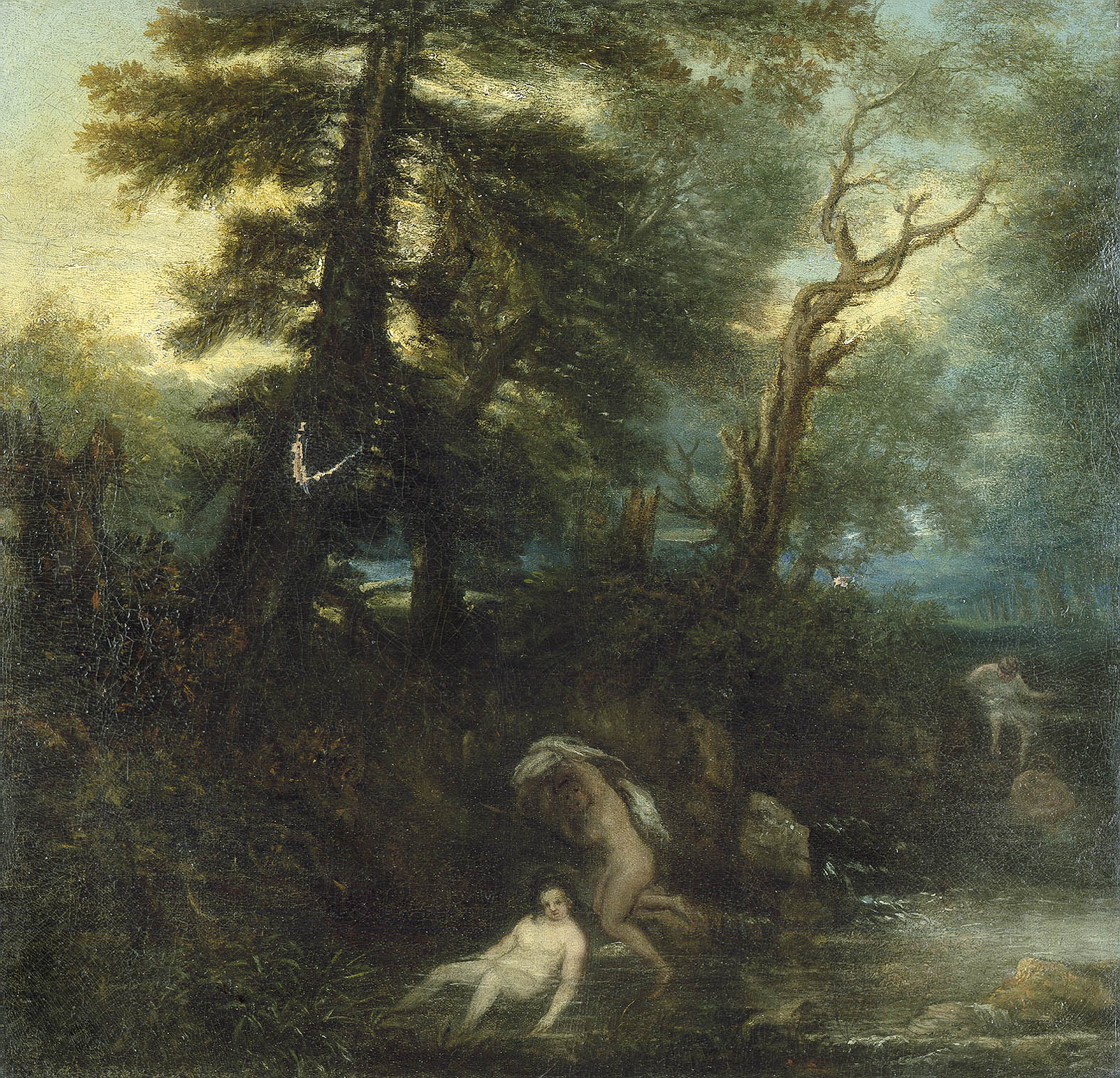
The landscape was at the very front of a group of paintings awaiting my inspection at Galerie Bassenge in Berlin, for whom I am a consultant. I was instantly fascinated by something I had seen before: the light filtering through the foliage of the tree to the left. Or was I just imagining it? No, it reminded me of the landscapes of Rubens. The nymphs in the foreground looked familiar too. Another fantasy, perhaps? No, for some reason these nymphs conjured up an association with Rembrandt’s 'Diana and her nymphs' of 1634 in Anholt Castle Museum (https://www.wasserburg-anholt.de/index.php/nl/).

And then I suddenly ‘saw’ it. There could be no doubt: this had to be a landscape by Jan Lievens. The handling of the light, the atmosphere: everything pointed in the direction of Jan Lievens, who was born in the province of South Holland and, today, is primarily known as Rembrandt’s colleague in Leiden, where they shared a studio for a while.
Upon my return to the Netherlands, my ‘vision’ was confirmed. Not only did I find a number of closely related landscapes, notably the 'Wooded walk' at the Talbot Rice Gallery, University of Edinburgh, and the 'Wooded landscape with Hagar and the angel' in the Museé des Beaux Arts in Rouen, but most importantly I came across a comment in H. Schneider / R.E.O. Ekkart, Jan Lievens: Sein Leben und seine Werke (1973, p. 168, under no. 334) which referred to a ‘Landscape with nudes’ that had been in the possession of the widow of Gerrit Cloppenburgh in Amsterdam and was mentioned in the 1704 inventory of her property.

My next task was to consult Lloyd de Witt in Canada, author of the catalogue raisonné of the work of Jan Lievens. I sent off an email asking whether he thought the Berlin work might be the lost landscape mentioned in the 1704 inventory. He confirmed my suspicion the same day.
A few weeks later I had the pleasure of myself showing Lloyd de Witt the actual painting. He told me that the unmistakable Titianesque character of the landscape linked it to Lievens’s visit to Berlin in 1652. Lievens was there because Frederick William, Elector of Brandenburg, and his wife Louise Henriette had commissioned a number of scenes for their Oranienburg Palace from him. The Landscape with bathing nymphs was probably painted after the Berlin trip, but it shows how, around 1650, Lievens was trying to attract noble patrons with his landscapes too. Landscape painting would have caught his attention during his years in London, where he must have seen the sketches by Anthony van Dyck.
I still cherish the memory of that moment in Berlin, on 28 February 2012, when I ‘recognised something not seen before’. I salute Max Friedländer who understood connoisseurship so well and wrote so perceptively about its principles (Max J. Friedländer, On Art and Connoisseurship, 1942).

